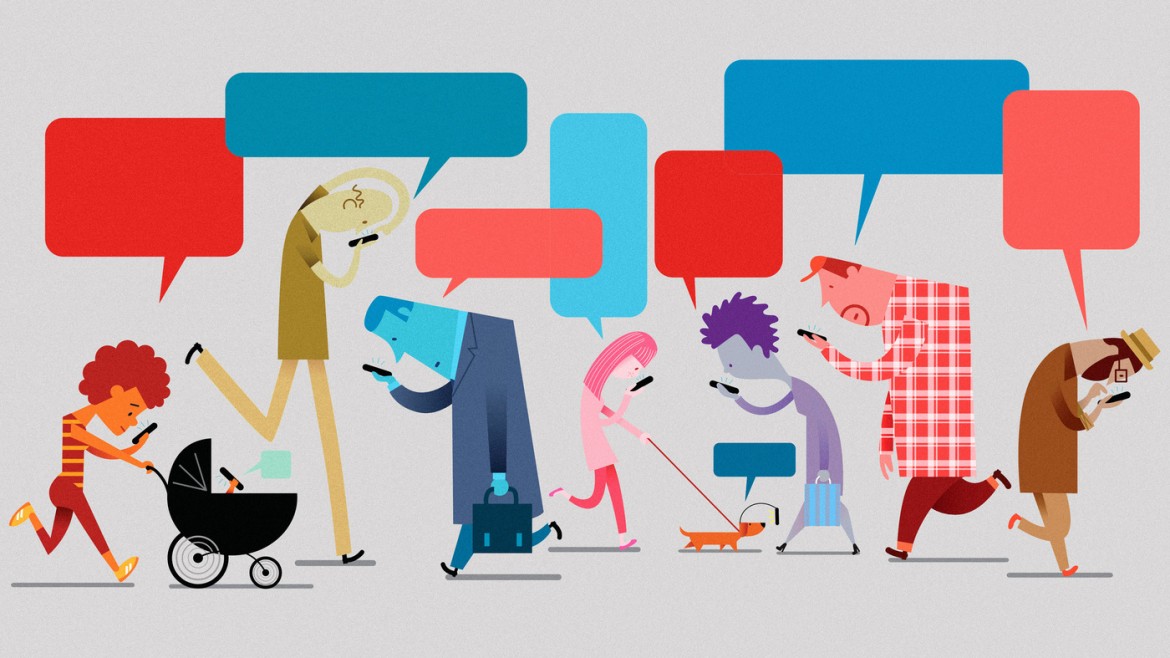Walter Quattrociocchi, 38, supervises the laboratory of Data Science and Complexity at Ca’ Foscari University in Venice. His research papers are quoted in specialist journals, international media (The New York Times, The Guardian and others), but also in important documents, such as the Global Risk Report of the Davos World Economic Forum. When Laura Boldrini, the Chamber President under the previous Italian government, created a working group to fight fake news in 2017, he headed the panel of experts.
Recently, Quattrociocchi published a book, Liberi di crederci: Informazione, Internet e post-verita (“Free to believe: Information, Internet and post-truth”), written together with the journalist Antonella Vicini. The book is based on the work of the interdisciplinary group of researchers directed by Quattrociocchi, composed of computer scientists, physicists and neuroscientists. The essay comes out at a decisive moment, as the Italian political debate seems monopolized by Interior Minister Matteo Salvini’s tweets. Online fake news about immigrants, vaccines and the alleged falsehood of the moon landing have existed before Salvini, but if ministers and undersecretaries spread these lies then there’s a greater potential for danger.
But Quattrociocchi says fighting fake news with patient, documented reconstructions is a useless effort. “The conspiracy theorist does not interact with those who dismantle fake news,” he told us recently. “In a 2015 study of 54 million Facebook users, we showed that only one user out of 12 interacts with contradictory voices. Those who adhere to a conspiracy theory enter in a comfort zone where ‘no one contradicts my ideas.’ At that point, any attempt to deny fake news leads to polarized positions, radicalizing them.”
What is the right way to combat the spread of fake news then?
The data show that 91 percent of the topics that polarize media discussions are also fake news topics. Thus, dismantling fake news is not an easy task and nobody really knows exactly which method is the best. We must be able to overcome the so-called “confirmation bias,” which is the natural tendency to believe in information that confirms our opinions. Perhaps the key lies in showing empathy with the interlocutor, whether he is the reader of a newspaper or the user of a social network.
In the book you write, “man as a rational subject is one of the greatest fake news in history.” What does that mean?
The irrational individual is such only for those who think differently from him, and you can say the same thing to inverted parts. Indeed, we are all irrational, to a certain extent. Instead, we think that we can understand everything. Conspiracy is not irrational: it is a strategy that tends to diminish anxiety and discomfort towards the outside world, and from this point of view is perfectly rational. Scientism is not very different; it often becomes another form of religion. Presenting science as a totem is not very different from the conspiracy theories.
In your research group there are information scientists and physicists. Not long ago, the analysis of social groups was carried out by sociologists and anthropologists. What has changed?
The crucial issue is data science. Before the Internet and social networks, sociologists could analyze groups of several hundred people in detail. Today, social networks allow us to study much wider numbers: in a 2017 study, for example, we analyzed 376 million Facebook users. Therefore, we need different competences. On the other hand, we can obtain more solid results from the scientific point of view: we verify theoretical hypotheses and try to verify their experimental reproducibility. Anthropologists relied on hermeneutics, and could hardly achieve the same result.
You have created the idea of “Pandoors,” an “integrated network of people, platforms and content.” What is this about?
We analyze and monitor the “temperature” of public debate, especially through social networks. The aim is to identify at an early stage, and maybe predict, the narratives and echo chambers that dominate the public debate. It could be a tool for more effective planning of a communication strategy on a given topic. We began working with the London School of Economics in London and, in Italy, with Corriere della Sera. Now we are looking at what is happening on the immigration topic in Italy. The debate on the Romani minority is really frightening. But it is still a work in progress.
Online misinformation seems fostered by a widespread anti-establishment sentiment. Will it continue to spread even now that the anti-establishment forces are in the government?
Fake news is not about political reality, as long as it is part of an ongoing electoral campaign. Those who succeed in fostering identity and a desire for revenge against the elite, which can be represented by anyone, continue to win. What is serious is that the so-called elite is responding to this situation with a classist attitude.

